Gluten Free Pizza Dough

Ingredients
320g Caputo Gluten Free Flour
1 Teaspoon Honey
1 Teaspoon Dried Active Yeast
255ml / g Warm Water
10g Salt
8g Extra Virgin Olive Oil
This is the Gluten Free Pizza Dough recipe that started it all! You'll be amazed that you can make Gluten Free pizza this good in your home oven. Never again will you have to make do with thin and sad looking crusts that are customary of frozen GF pizzas you can find in the supermarket. You'll be hard stretched to find someone who wouldn't be delighted with this dough, whether they're Coeliac or not.
There are very few differences between this recipe and the one for regular Pizza Dough - with just the flour being switched out for a different kind. Caputo Gluten Free pizza flour is made in Italy, so you know it's going to be good. You can find it online on Amazon.
This recipe yields 2 dough balls, each weighing approximately 300g, suitable for a 12" pizza (depending on how thin you like your crust). The recipe can be scaled for different quantities.
Instructions

1. Add the Warm Water to a large mixing bowl - or the bowl of a stand mixer if you have one. Make sure to do so accurately, either using a measuring jug, or better yet a set of digital scales (did you know that 1 gram of water is the same as 1ml?).
It is important that the water is still comfortable to touch, any hotter and you risk killing the yeast once it is added.

2. Add the Honey and mix briefly with a spoon to ensure that it is dissolved in the water before adding the Yeast.
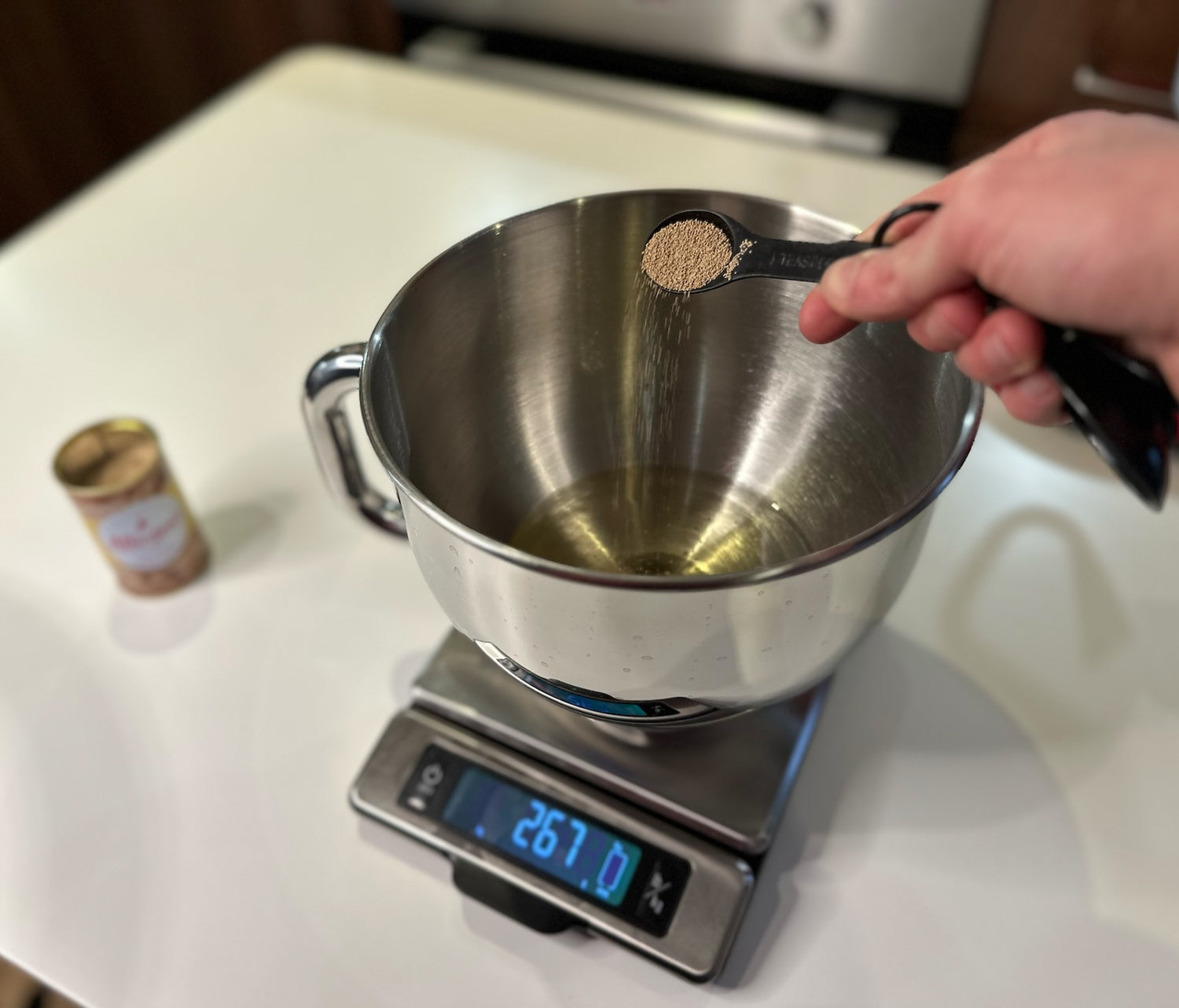
3. Add the Yeast and mix it into the water. It doesn't have to fully dissolve, and it's okay if a few strands get stuck to the side of the bowl, as long as the majority of it is incorporated.
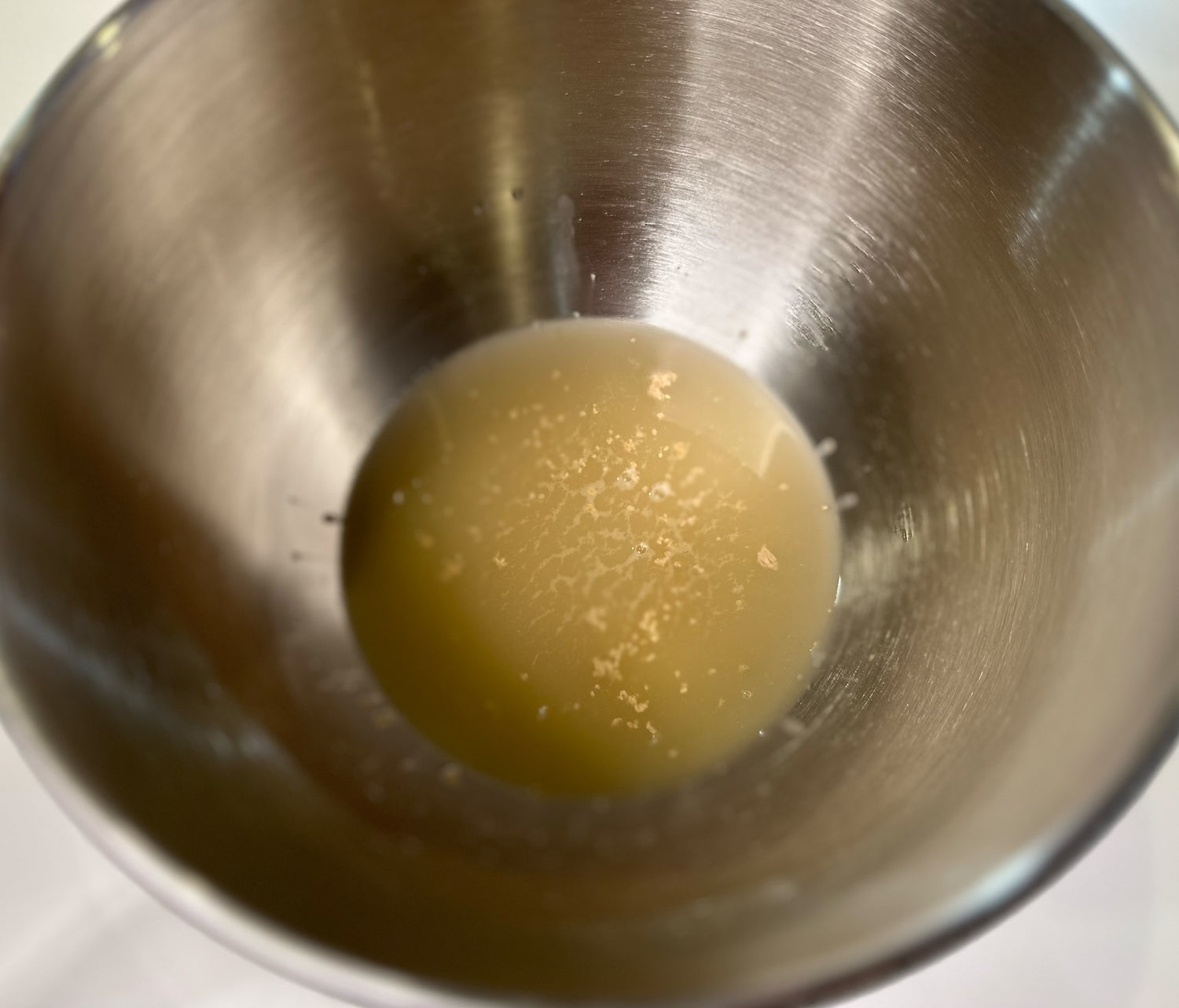
4. The mixture should look like this immediately after mixing. Leave this to stand for 10 - 15 minutes.
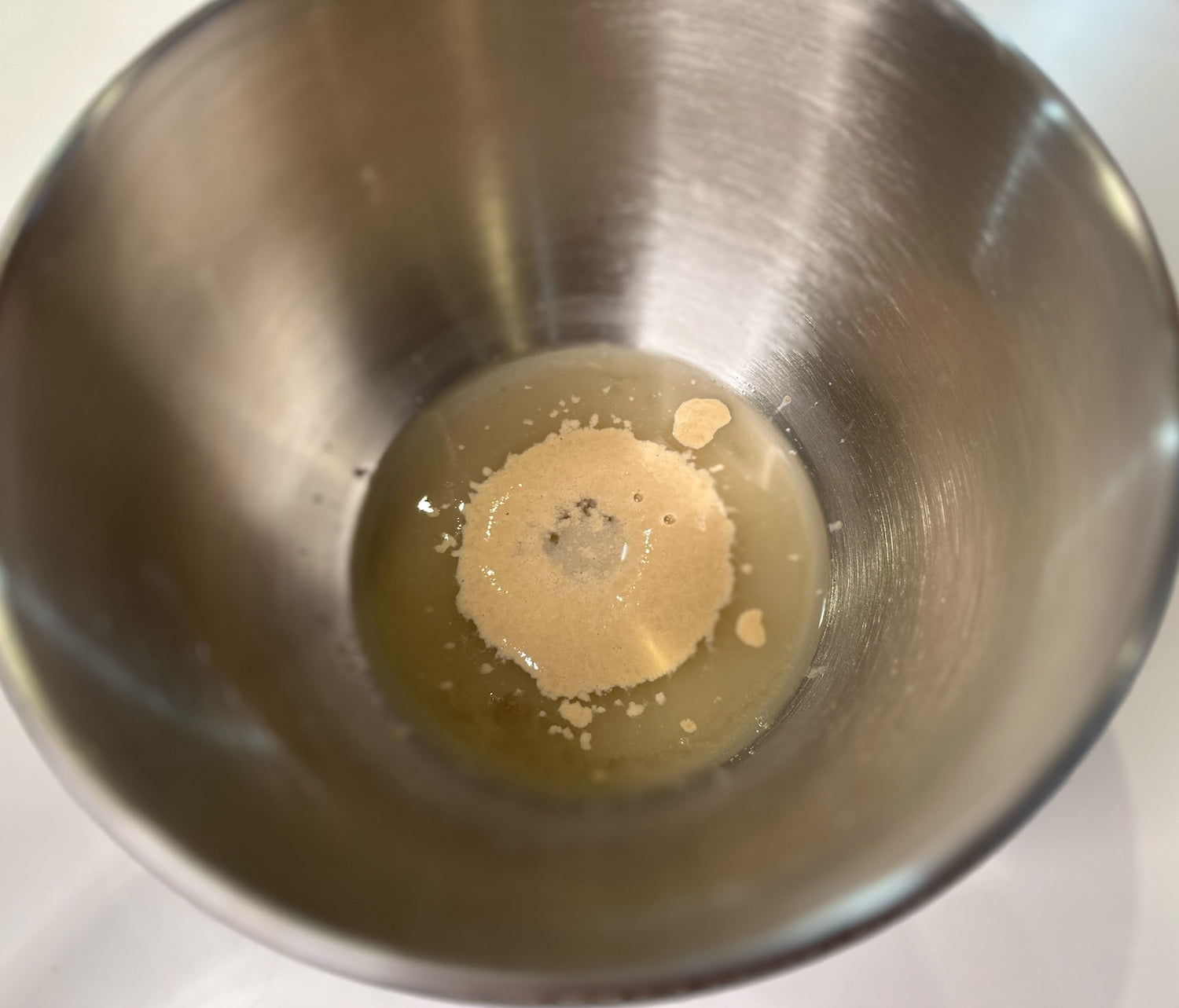
5. After this time, the Yeast should have started to foam and appear pillowy - in my example you can see that it formed a circle on the water's surface.
This is a process known as blooming, where the Yeast is activated and starts to eat the sugar that's in the Honey. This is how you know that your Yeast is alive, and that the dough is going to be a success. If the Yeast doesn't bloom, then you'll have to buy more; using dead yeast will not work, and your crust won't rise.
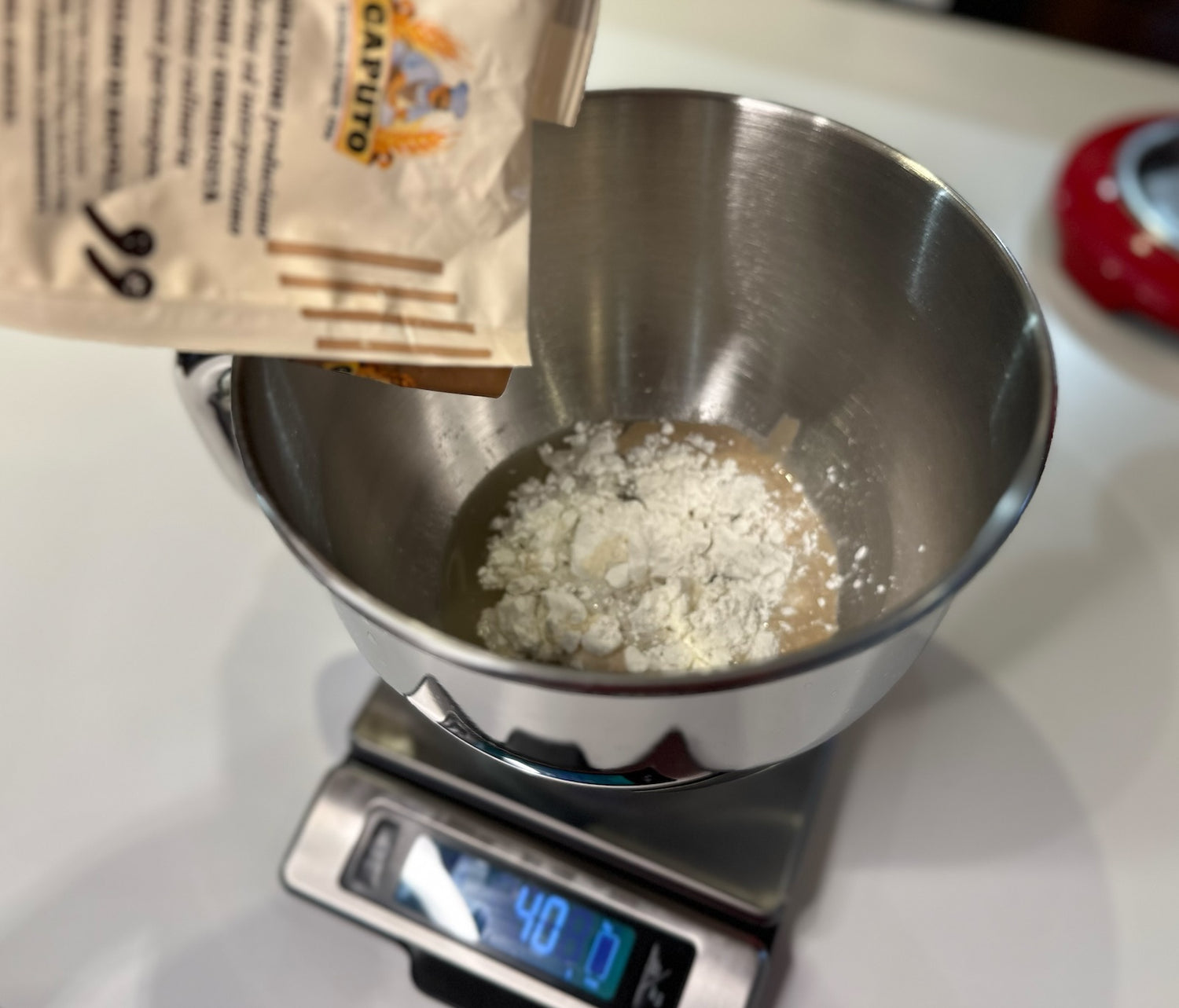
6. Once bloomed, add the Caputo Gluten Free Flour to the Water / Yeast mixture, again, using scales in order to do so precisely.

7. Then you can start to mix. If doing this by hand you can begin by using a wooden spoon or something similar, particularly whilst the dough is very sticky.
If using a stand mixer, use the dough hook attachment and begin to mix on low speed for 2 minutes.
Once the 2 minutes is over, stop mixing and scrape down the sides of the bowl to make sure everything's incorporated.

8. Start mixing again for another 2 minutes, and gradually add the Salt.
Once the 2 minutes is over, stop mixing again, and scrape down the sides of the bowl once more.

9. Start mixing again for a further 4 minutes, whilst gradually adding the Extra Virgin Olive Oil.
This will be tricky to incorporate if doing so by hand, and may require closer to 8 minutes of kneading.

10. Cover the bowl with a tea towel and leave it out on your work surface for 30 minutes to hydrate.
If doing so without a stand mixer, it's likely that at this point you will find it easier to swap from using a wooden spoon, to using your hands.

11. Rest the dough in its mixing bowl with a tea towel covering it for 30 minutes. Once the time is up, knead the dough for a further 2 minutes.
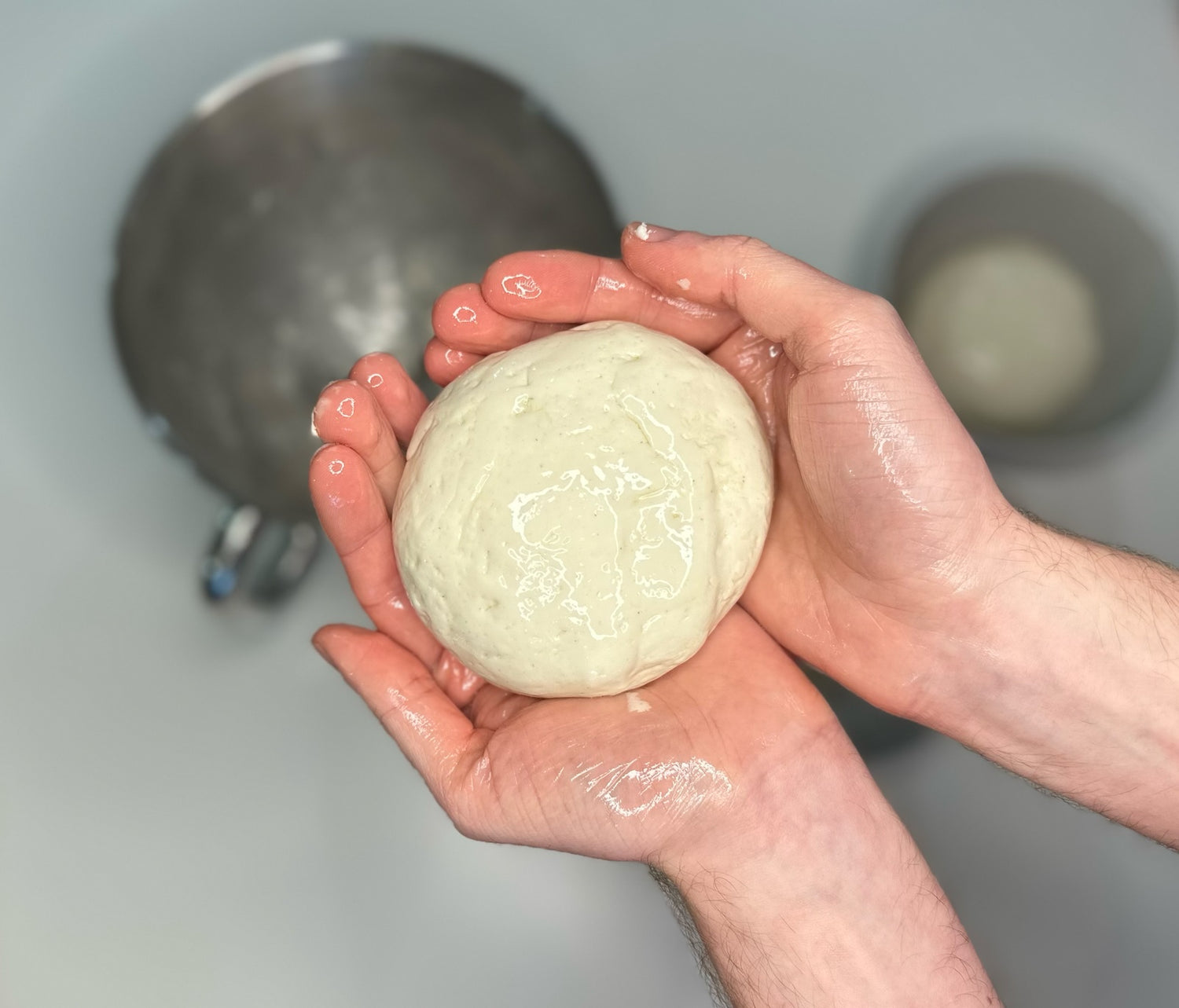
12. Take the dough in your hands and form it into one large ball - if you coat your hands in a bit of Oil first, this helps prevent it from sticking to you.
Separate it into two evenly sized pieces and roll these into smaller balls, tucking the open ends of the dough underneath so that the outer surface appears smooth and free of tears.
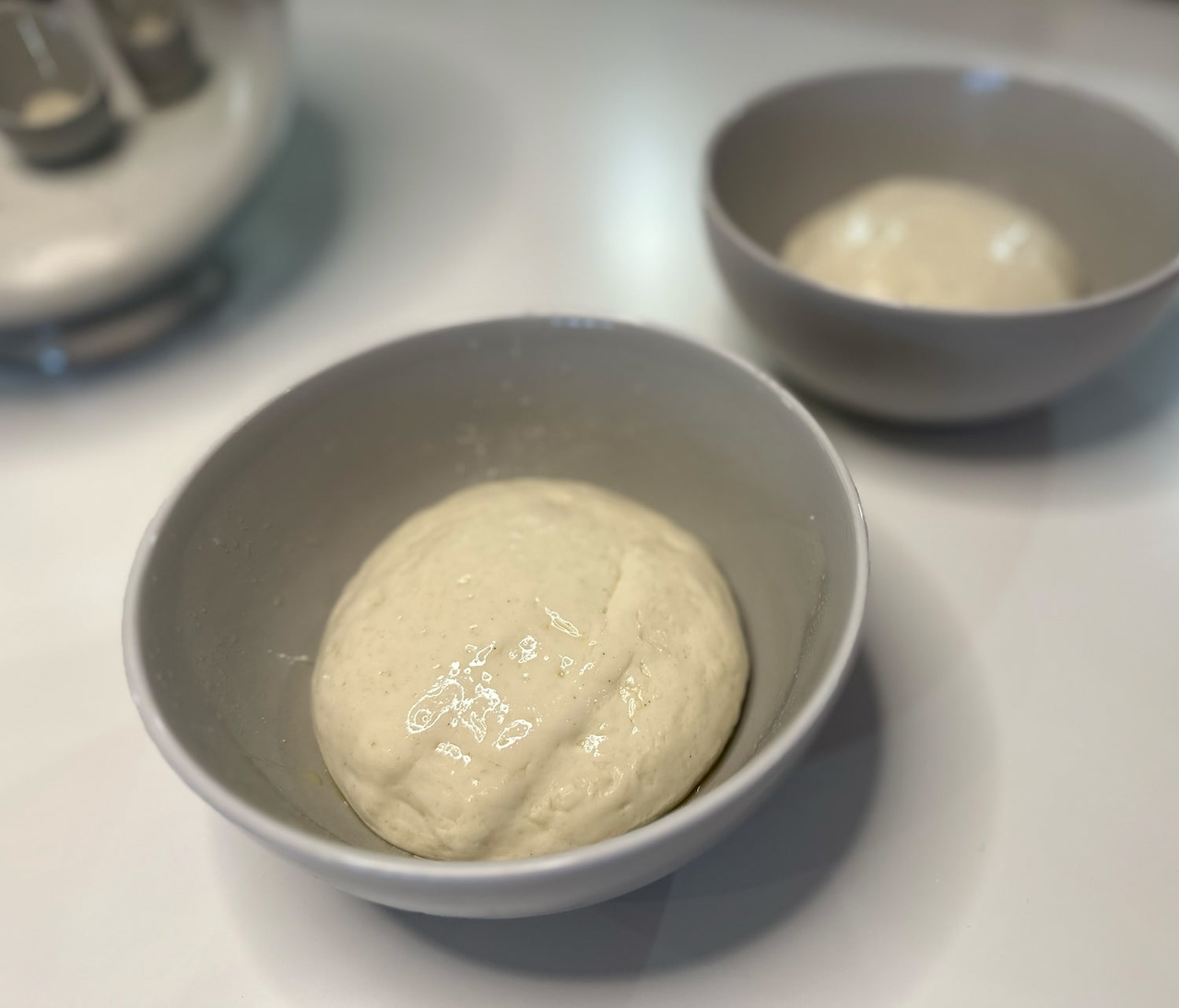
13. Lightly brush Oil over the insides of individual bowls or plastic containers that you will then place each dough ball in to. Cover the bowls tightly with cling film or use the lids for the plastic containers.
Place these in the fridge to cold ferment for a minimum of 1 day. 2 days is better still, but you should expect the best results from waiting for 3.
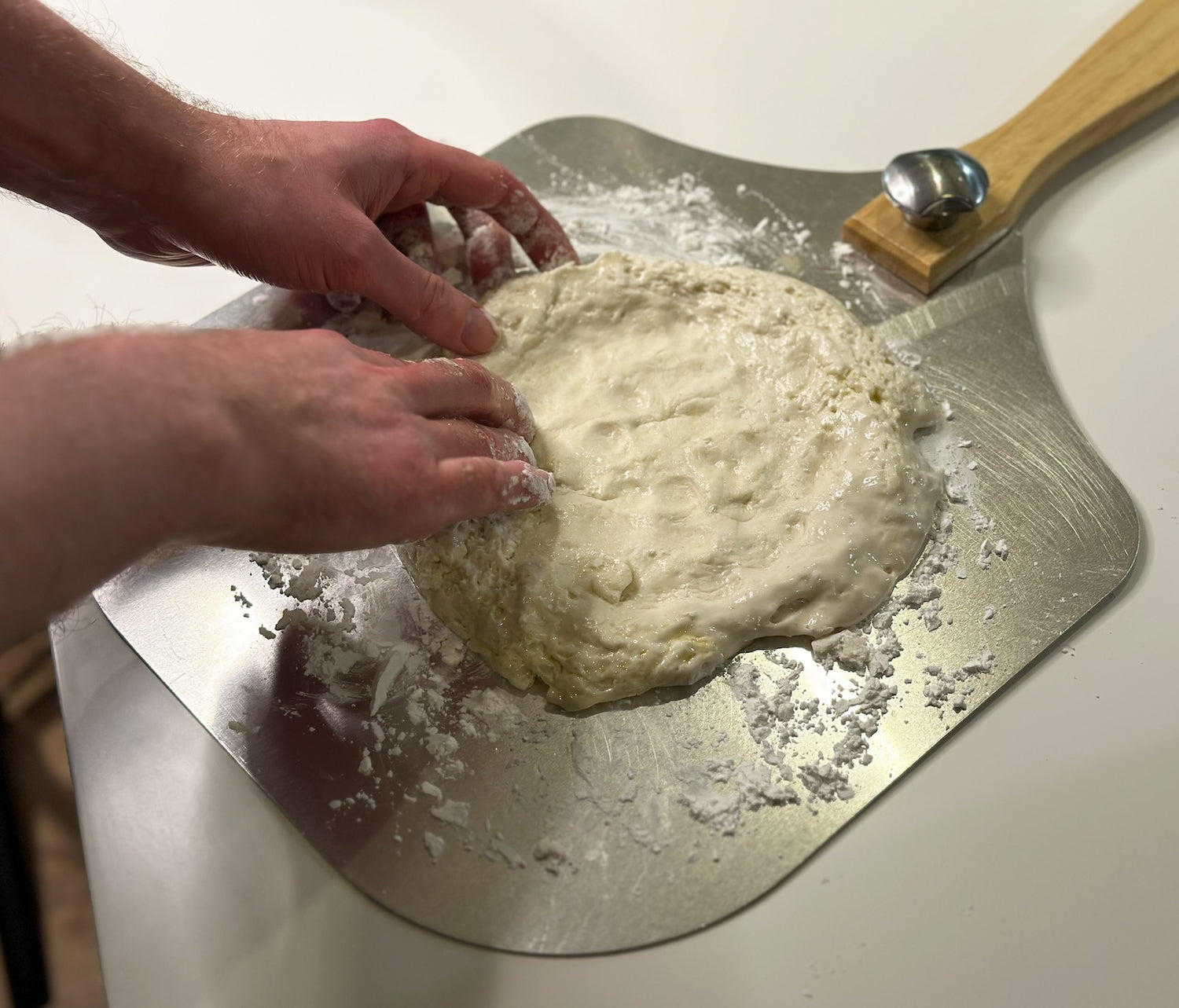
14. After 3 days, the dough should have risen considerably and taken up most of the container it was placed in. Keep the dough in the fridge until you're ready to make your pizza. This Gluten Free dough is quite wet, so keeping it cold helps with the shaping process.
Rather than being able to stretch it in the air, I find it's best placing it on a floured board (or Peel if you have one), and gradually stretching to make a circular shape. Do this by pushing down in the centre of the dough and pulling outwards, as you don't want to push directly down on the crust. Keep rotating the dough whilst stretching and add flour as necessary to your surface to prevent it from sticking.
Once stretched, your dough is ready to receive sauce and toppings before being placed in the oven on your pre-heated Crust King Baking Steel!
